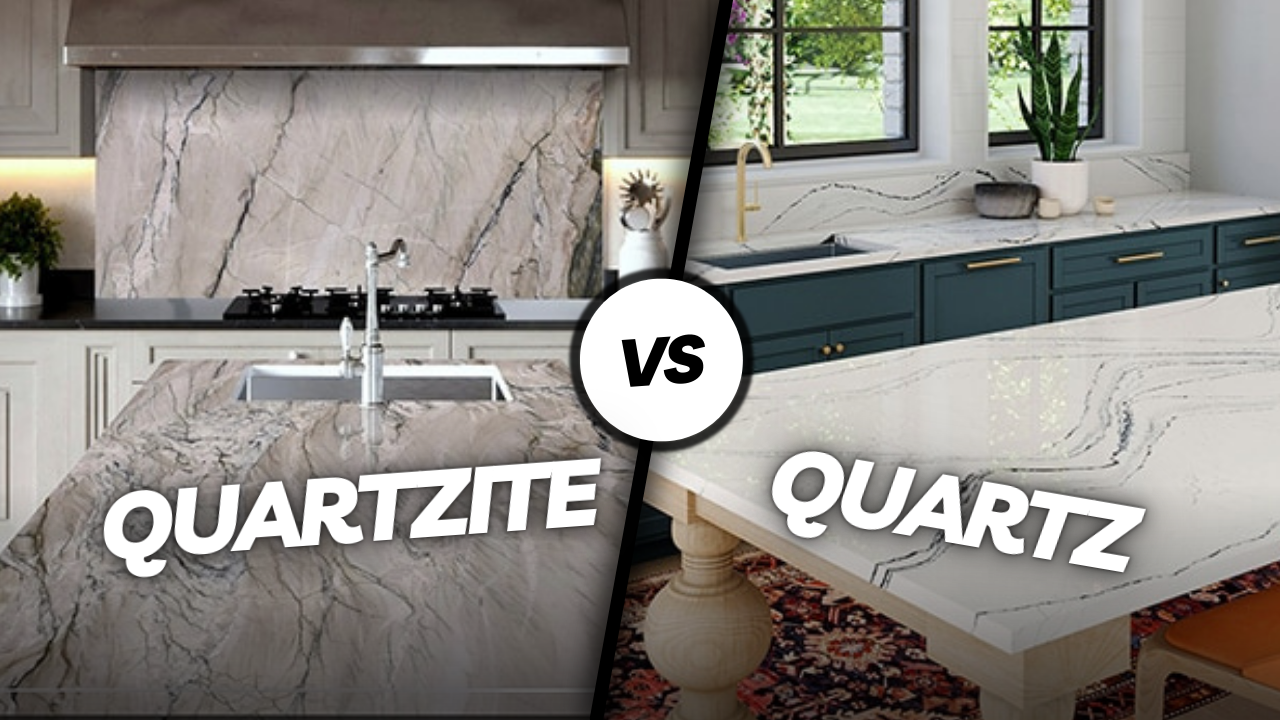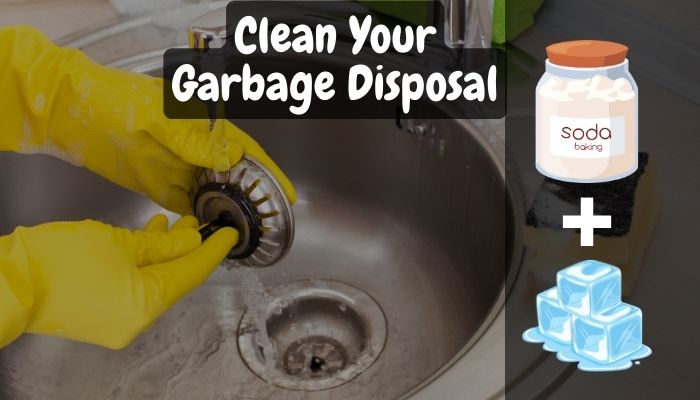Introduction
Without a shadow of a doubt, quartzite countertops enhance the beauty of your kitchen. However, if you don’t keep them clean at all times, it may just spoil the overall look of your kitchen. Therefore, you need to know how to clean them. You may think that it’s extra work or just a pain in the neck, but it will certainly make your kitchen presentable and more hygienic. So, let’s learn how to clean quartzite countertops properly.
First and foremost, let’s discuss some basic things. Then we will dive into the meat of the matter.
What is Quartzite?
Quartzite is a dense and low-maintenance natural stone, possessing a stunning glassy appearance that occasionally resembles marble. Its heat-resistant properties make it an ideal selection for kitchen countertops. While virtually resistant to scratches, etches, and chips, it’s essential to note that quartzite is not entirely indestructible, as sharp objects can still cause damage.
Do Not Confuse Quarzite with Quartz!

Be cautious not to mix up quartzite and quartz despite their similar names. Quartzite is created through the exposure of quartz-rich sandstone to high heat and pressure. On the other hand, quartz countertops are manufactured using ground-up natural minerals mixed with resins, making them a manmade product.
How Do Quartzite Countertops Get Dirty?
“Quartzite is a popular choice for kitchen countertops due to its durability and resistance to heat and scratches. However, it can still become stained if it is not properly maintained”, says Helen Knight of SolveKitchenIssue.
She also says that one common cause of staining in the kitchen is exposure to acidic substances such as lemon juice or vinegar, which can etch the stone’s surface and cause discoloration. Additionally, oil, grease, and other food stains can penetrate the stone if they are not promptly cleaned up.
She states that to prevent stains, it is essential to clean up spills and stains as soon as possible using mild soap and water. Avoid using abrasive cleaners or pads that could scratch the surface. Instead, opt for soft cloths or sponges for cleaning. Regularly sealing the quartzite countertop can also help prevent staining and maintain its beauty. This protective barrier can act as a shield against potential stains.
By taking these precautions and maintaining proper care, you can enjoy the beauty and durability of quartzite countertops in your kitchen for years to come.
How to Clean Quartzite Countertops

According to Academy Marble, the following steps need to be followed in order to clean quartzite countertops in the best possible manner:
Step 1: Develop a Regular Sealing Plan
To safeguard your quartzite and maintain its clean and appealing appearance, it’s essential to prevent stains from food, drinks, chemicals, and other household items that can permeate and discolor the porous stone surface. Although your quartzite is likely sealed before installation, the sealant may wear down over time, leading to thin spots where staining agents can eventually penetrate.
Generally, a sealant can last for years, but areas experiencing heavy use (such as around sinks, dining areas, and cooktops) may wear out more quickly. For this reason, it’s advisable to seal quartzite countertops at least once a year (depending on usage) to prevent common forms of damage, like staining, and preserve their natural color and shine.
Step 2: Soap and Water for Effective Cleaning
While there are stone cleaners designed explicitly for protecting natural stone countertops, there are more cost-effective cleaning options available. For most people, a simple mixture of warm water and mild soap (like dish soap) proves to be sufficient. However, it’s essential to use the right tools and perform the cleaning properly.
This means using a microfiber cloth to avoid creating tiny scratches in the finish, as abrasive cleaning cloths can dull the countertop’s shine and lead to further damage. When using soap, be sure to thoroughly rinse the countertop with clean water to prevent any filmy residue that could cloud the surface over time.
In reality, any non-abrasive, non-acidic cleanser with a low pH can be used. Stone cleaners are convenient because you can simply spray and wipe, preserving the sealant’s shine.
Avoid natural cleansers with vinegar or lemon juice, as the acids in these substances can harm the sealant.
Step 3: Promptly Deal with Liquids
Even with regular sealing and frequent cleaning, it’s essential not to let staining agents linger on the surface. If you spill wine, pasta sauce, or acidic substances on the countertops, clean them up immediately. Allowing these substances to sit or dry on the surface can make them more challenging to remove and potentially damage the finish, exposing the porous stone to stains.
Step 4: Use a Poultice for Stains
Despite taking preventative measures, there’s still a possibility of staining occurring. The good news is that there are effective steps you can take to combat stains that penetrate the stone. The primary method for removing stains is by using a poultice.
While you can buy a pre-made poultice, making your own is straightforward and convenient. The simplest poultice consists of a mixture of water and baking soda, creating a thick (not runny) paste.
Apply the poultice directly onto the stain, cover it with plastic wrap, secure the edges with painter’s tape, and leave it in place for 24 hours. Then, remove the wrap and allow the poultice to dry before wiping the area clean with water. If any stain remains, repeat the process. Once the stain is gone, re-seal the area (or perhaps the entire counter surface, if due) to prevent further staining.
To maintain clean counters and prevent potential damage, consider using coasters and trivets as simple preventative measures. Proper cleaning and maintenance are crucial for achieving long-lasting and durable countertops that continue to look their best.
People also read: How to Clean Garbage Disposal?
How to Disinfect Quartzite Countertops?

01. Prepare your materials. You will need:
- A spray bottle
- A soft cloth
- Rubbing alcohol (70% or higher)
- Water
02. Test the solution in an inconspicuous area. This is to make sure that the solution will not damage your countertop.
03. Mix the solution. In a spray bottle, combine equal parts rubbing alcohol and water.
04. Spray the solution on the countertop. Be sure to saturate the surface.
05. Let the solution sit for 10 minutes. This will give the alcohol time to kill any bacteria or viruses.
06. Wipe the countertop clean with a soft cloth. Be sure to dry the countertop completely.
Sealing Quartzite Countertops

Valerie A., A DIY enthusiast, has put forth the following steps for sealing quartzite countertops:
Applying the Sealer
Select the appropriate sealer and either spray or pour a generous amount onto the countertop.
Prior to sealing, make sure to clean the countertop thoroughly and remove any stains.
Distributing the Sealer
Use a roller, paint pad, or paintbrush to evenly distribute the sealer across the countertop. Allow the sealer to penetrate the stone for approximately 15 minutes. Be mindful that some sealant products may emit noxious fumes. Before application, carefully read and follow the label instructions and warnings. Wear gloves and a safety mask as directed, and ensure proper ventilation by opening windows.
Wiping off Excess Sealant
Using a paper towel or a clean cloth, wipe down the countertop to remove any excess sealer, ensuring an even application.
Repeating the Sealing Process
To ensure effective sealing, apply a total of three coats on the countertop. Repeat Steps 1 – 3 until you have applied three coats in total.
Allowing Sealer to Cure
After applying the sealer three times, allow it to cure for 24 hours before resuming regular use of the countertop.
Recommended Cleaners for Quartzite Countertops
- DuPont™ StoneTech® Professional Stone & Tile Cleaner
- DuPont StoneTech KlenzAll (stain remover)
- DuPont StoneTech Professional Heavy-Duty Coating Stripper
- Aqua Mix Sealer and Coating Remover
- DuPont StoneTech Professional Bullet Proof (sealer)
- Aqua Mix Sealer Choice Gold (sealer)
Important Information
Cleaning Method: Use warm water and mild dish soap to clean quartzite countertops gently.
Stone Cleaners: Stone cleaners are safe to use but not necessary; soap and water are sufficient.
Sealing Frequency: Seal quartzite countertops at least once a year, depending on usage.
Avoid Acidic Cleaners: Do not use acidic cleaners like vinegar or lemon juice.
Stain Removal: Create a poultice with water and baking soda to remove stains.
Prompt Cleaning: Clean up spills promptly to prevent damage and staining.
Maintenance Tips: Use coasters, trivets, and proper cleaning to maintain long-lasting beauty.
Ventilation for Sealing: Ensure good ventilation when applying a sealer, following label instructions. Wear protective gear.
Conclusion
To conclude, quartzite countertops should be kept neat and clean so that your kitchen looks good. If you are conscious about the looks of your house, you have to pay attention to the looks of your kitchen as well because it’s an important part of your house. Follow the aforementioned instructions and keep your quartzite countertops clean!

